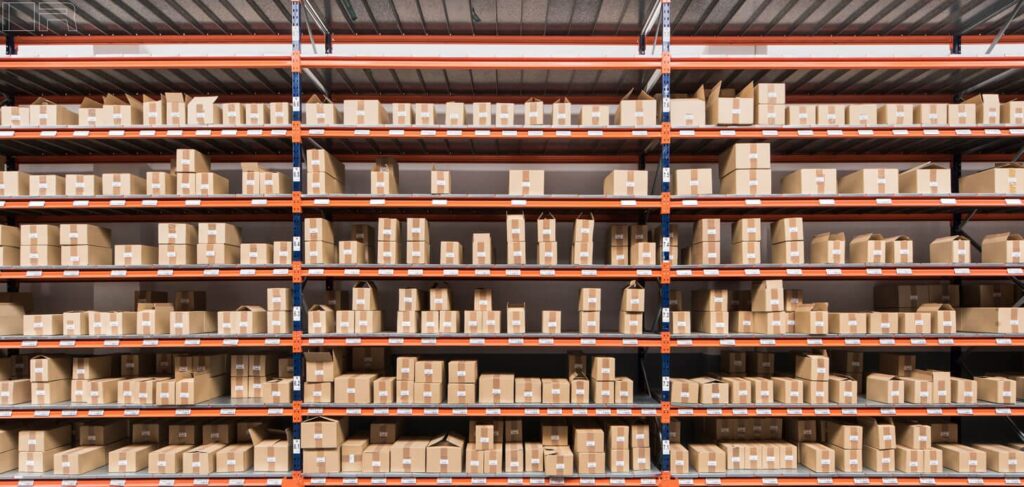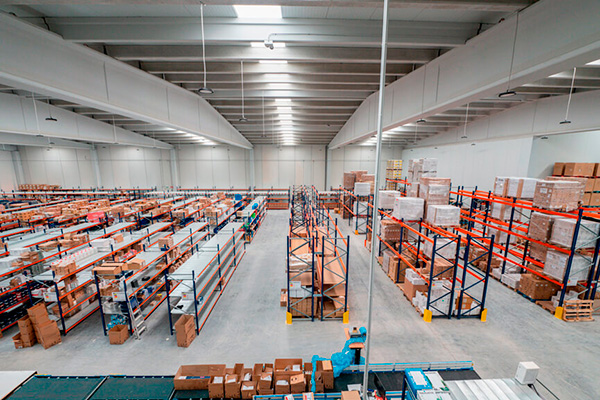Reverse logistics plays a vital role in warehouse management, enabling the return, recovery, repair, or recycling of products. With the rise of e-commerce and growing environmental concerns, this process has become even more relevant. There are two main types of reverse logistics: green, focused on recycling, and return, dealing with resellable products.
Its implementation presents both challenges and opportunities in controlling the flow of material and information. Key activities in this area include returns management, product reuse, and warehouse optimisation. The impact of reverse logistics on the supply chain is evident in areas such as improving production processes to reduce the environmental footprint or driving new business ventures.
Importance of reverse logistics in warehouses
Reverse logistics plays a crucial role in warehouse management, as it involves handling returned products and optimising the supply chain. Additionally, it has a direct impact on sustainability and efficient resource management.
Managing returned products within the warehouse
Managing returned products is a key aspect of reverse logistics. Depending on the industry, companies may face a high percentage of returns, especially in the e-commerce sector. Efficient solutions must be implemented to manage this product flow in an organised manner. Manual load shelving, also used for managing order preparation processes, facilitates the storage and handling of returned products for either recycling or preparation for resale.
Planning and optimising the supply chain
It is essential to consider the reverse flow of products and ensure efficient management of both materials and the information generated by these activities. Effectively coordinating the different stakeholders involved and ensuring proper planning and execution of logistical activities are crucial aspects of this process.
Impact on sustainability and efficient resource management
Proper handling of returned products helps reduce waste and encourages recycling and material recovery practices. Additionally, optimising the supply chain not only lowers associated costs but also maximises operational efficiency, ensuring more effective resource management across the entire chain.
Types of reverse logistics
Green reverse logistics
Green reverse logistics focuses primarily on recycling and recovering materials from returned products. It is a practice aimed at minimising any environmental impact and promoting responsible use of resources. By implementing recycling and reuse techniques, the goal is to give the materials a second life and reduce waste generation. This means that efficient sorting, classification, and processing systems must be implemented in the warehouse to ensure the proper handling and subsequent reuse or recycling of returned materials.
Return reverse logistics
Return reverse logistics focuses on products that can be resold after being returned. It is particularly relevant in e-commerce, where the return rates tend to be high.
Managing returned products within the warehouse is essential to ensure their proper handling and reintegration into the supply chain. This involves inspection, classification, and repair (if necessary), as well as appropriate storage of returned products, all carried out efficiently. Additionally, it is important to have inventory management systems that enable the identification and organisation of returned products, ensuring their availability for resale.

Challenges of reverse logistics in warehouses
Managing returns in the context of e-commerce
Today, especially with e-commerce, returns have become a major challenge for businesses. The rise in online sales has led to a significant increase in returned products, requiring efficient management to minimise the impact on warehouses.
One of the key challenges is the classification and evaluation of returned products. Each item must be carefully assessed to determine its condition and decide whether it can be resold, repaired, recycled, or discarded. This requires an efficient evaluation system to streamline the process and enable quick decision-making.
Additionally, returns management involves the internal logistics of returned products within the warehouse. An effective storage system is needed to organise and locate returned products efficiently. This process requires manual load metal shelving or picking systems that provide optimal storage capacity and offer quick access to products.
Reusing packaging materials
Another challenge in reverse logistics is the reuse of packaging materials. Returned products often come with their original packaging, which may still be in good condition and suitable for reuse. This presents an opportunity to reduce waste and promote sustainability in warehouses.
To take advantage of this opportunity, businesses need a packaging material management system that allows for proper classification, storage, and reuse. This requires a designated storage area for reusable packaging materials, as well as a tracking system to maintain accurate control over them. It is also crucial to establish internal policies and procedures that encourage the reuse of packaging materials. To achieve this, it is essential to provide adequate training, introduce incentives to encourage adoption, and raise awareness among staff about the importance of this practice.
Solutions for efficient reverse logistics
1. Warehouse optimisation
Warehouse optimisation is one of the key factors in ensuring effective reverse logistics. To achieve this, it is essential to implement efficient storage systems, such as metal shelving that enables proper organisation of returned products. These shelving units should be designed to facilitate quick identification and easy access to products, reducing search and handling times.
Another important strategy in warehouse optimisation is the implementation of inventory management technologies, such as barcode or RFID systems. These provide accurate tracking and control of returned products. Such tools help locate items within the warehouse more efficiently, speeding up their retrieval and minimising losses.

2. Material Recovery and Recycling
Material recovery and recycling play a fundamental role in reverse logistics, supporting sustainability and environmental responsibility. It is therefore important to implement efficient sorting and classification strategies for returned products in the warehouse, enabling the identification of materials suitable for reuse or recycling.
Additionally, forming partnerships with specialised recycling providers is necessary to ensure proper processing and final disposal of materials. These actions not only contribute to environmental protection but can also generate economic benefits through the sale of recovered materials.
3. Administrative and record-keeping activities
Efficient management of reverse logistics requires proper planning and administrative control. This necessitates establishing clear processes for the registration and tracking of returned products, from their receipt in the warehouse to their final disposal.
These processes should include verifying the condition of returned products, recording the reasons for their return, and updating information in management systems. Additionally, it is important to maintain thorough control over both the costs associated with returns and the outcomes achieved through the implemented solutions.
Impact of reverse logistics on the supply chain
Enhancing production processes
Implementing reverse logistics in warehouses leads to significant improvements in production processes. By recovering returned products, companies have the opportunity to evaluate and analyse the reasons for returns, identifying potential issues in production, design, or product quality. This information is valuable for implementing enhancements and optimising production, resulting in greater efficiency and profitability for the business.
Moreover, reverse logistics allows for the reintroduction of repaired or refurbished products into the market, generating new revenue streams and making use of previously utilised resources.
Reduction of environmental impact
Reverse logistics directly contributes to reducing the environmental impact of commercial operations. Through the recovery and recycling of materials from returned products, the need for extracting and manufacturing new resources is diminished, leading to lower energy and material consumption.
Additionally, reverse logistics enables proper management of packaging materials, promoting their reuse and reducing waste generation. These sustainable practices aid in environmental conservation and support the achievement of the Sustainable Development Goals.
Development of new business activities
The implementation of reverse logistics in warehouses has opened up new business opportunities and driven the development of activities previously unexplored in the corporate world. Companies have recognised the potential to offer repair, refurbishment, and recycling services for returned products, creating jobs and expanding their range of services.
Additionally, reverse logistics has encouraged collaboration with suppliers and strategic partners in managing returned products, fostering business alliances that benefit all parties involved. These new activities promote innovation and diversification, strengthening the competitive position in today’s market.
If you need to improve these processes within your warehouse, please contact our technical team for advice, with no obligation, and let us offer you the best solution.

